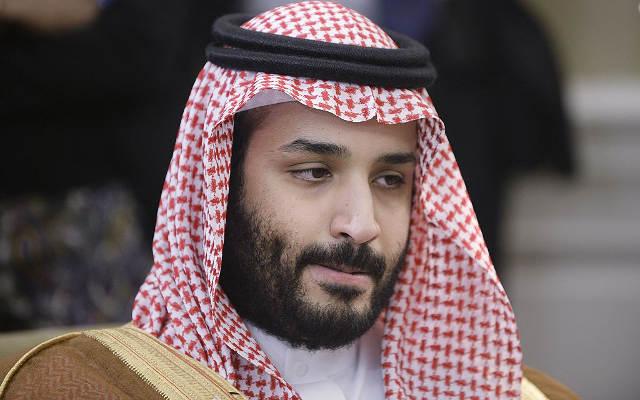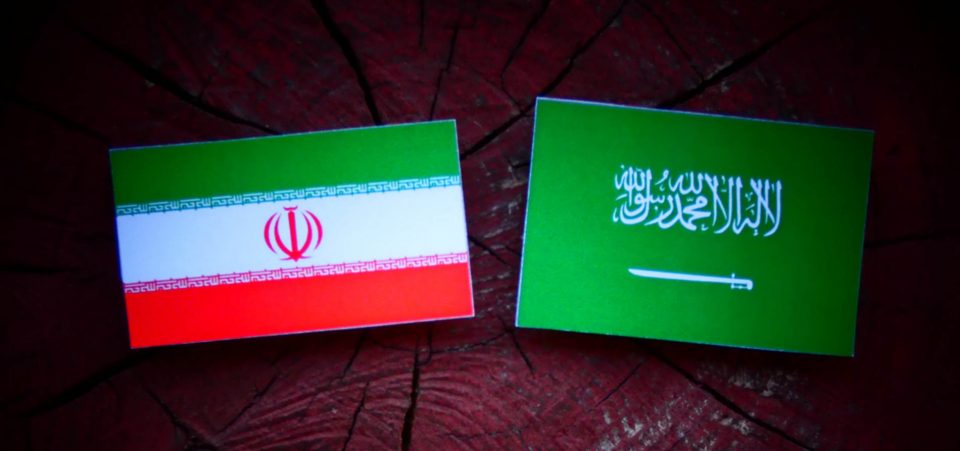Saudi Arabia Seems Ready to Declare a War on Iran
Saudi Arabia and Iran appear to be edging ever closer to war. The Saudis summoned Lebanese Prime Minister Saad Hariri just over a week ago. He has not returned to Lebanon yet and has since resigned after pronouncing a speech that seemed scripted. As he read the words, Hariri seemed more like one of those Islamic Jihad hostages from 1980’s Beirut than a Prime Minister acting according to his own free will. Hariri holds Saudi citizenship; thus, he can be held accountable to the Kingdom.
The same Hariri is also the key to a delicate political arrangement in Lebanon, without which the country could implode back to the civil war that characterized it 35 years ago. Lebanese wars are never about only about Lebanon. Rather, Lebanon becomes the proxy battlefield where all of the Middle East’s tensions play out. Wars that occur in Lebanon, moreover, tend to engage Israel as well.
The Syrian conflict has seen worse days, but as the Syrian and Russian forces consolidate control over the last ISIS strongholds, uncertainties remain about Syria’s post-war political layout. The Saudis—and others—may be preparing to strike now, before any eventual “Geneva peace conference” might lead to the restoration of Syria within the proverbial international community.
The Saudis might play a more direct role now. Until recently, they’ve been happy sponsoring various militias to wreak havoc in Syria against the Bashar al-Asad regime. But in early November, Riyadh received an unexpected delivery. An Iranian-made missile, fired from the Houthi rebels that have embarrassed the Saudi army in Yemen, landed near Riyadh. The Saudis were keen to emphasize the device’s Iranian manufacture.
The Crown Prince Has Already Started to Make His Moves
Crown Prince Muhammad bin Salman (MbS) has already started to mobilize regional allies. Saudi Arabia has demanded an emergency session of the Arab League to be held in Cairo shortly to discuss the issue. No doubt, MbS will instruct his diplomats to present the situation as reflective of Iranian interference. (Source: “Saudi Arabia Requests Urgent Arab League Meeting Over Iran: Egypt State News,” Reuters, November 13, 2017.)

Credits: Pool/Pool/GettyImages
This has not yet prompted the Saudi Air Force to deploy its “F-15” fighter jets. But should a few more missiles drop in Saudi territory, the ambitious Prince Muhammad bin Salman would not hesitate to deliver the order. For starters, a war might help the young Crown Prince consolidate his power, having already launched a veritable purge of the Kingdom. The Prince has been keen to arrest the princes who, through their wealth and influence in Saudi Arabia, might have compromised his plans.
As for the F-15 jets, they have been on alert and scrambling, ready for the order. The Saudis would not target Iran directly. They would most likely go after Lebanon first. The Syrian Air Force might respond. Similarly, the Russian air force is operating in nearby Syria. (Source: “Arab League To Hold Urgent Meeting On Iran As Saudis Reportedly Mobilize Fighter Jets,” Zero Hedge, November 13, 2017.)
Hezbollah has fought alongside the Russian forces to defeat Islamic State and other so-called “moderate” militias as well. The risk is that the Saudis could trigger an unprovoked attack against Lebanon, which could escalate quickly. Russia could get involved as well. If that happens, it won’t be long until the United States also gets involved.
The Region Is Already in a High State of Alert
Apart from Syria, the Middle East has been in a high alert state of alert since the Qatar crisis that began in June of 2017. The Saudis, the U.A.E., Bahrain, and Egypt have isolated Qatar, accusing it of collaborating with Iran. Responding to the ever-escalating military tensions, Iran has accused the Saudis of destabilizing the region with dangerous provocations. (Source: “Middle East war fears grow as tensions mount between Saudi Arabia and Iran,” Herald Sun, November 11, 2017.)
The roots of a possible Iranian-Saudi war are long and deep. Limiting the analysis to the past few years, the trigger might be in Yemen rather than Lebanon. But, Lebanon—more specifically, Hezbollah—would bear the weight of the response. Saudi Arabia has intensified the purchase of heavy weapons, shopping for jets, and artillery and tanks in the United States to the tune of $250.0 billion in the spring of 2017.
The Saudi prince also believes he enjoys Trump’s support. President Trump offered one of the strongest ever endorsements for a Middle Eastern ally against its regional enemies last spring. Thus, the Saudi royals—especially MbS—believe they can count on continued support from Washington. The Israelis, who have just taken delivery of several F-35 Lockheed Martin jets, will not object to a Saudi pre-emptive strike.
The Saudis Should Not Be Feeling This Confident
Tensions and political games have gone past the point of unsustainability. The biggest risk is not even that Riyadh might initiate a confrontation. The stage has already been set for that. Rather, just as in WW1, any episode could be construed to serve as casus belli. An accident is all it takes.
In retrospect, it’s easy to analyze the causes of a conflict or a market crash. However, it’s all but impossible to predict the single spark that leads to disaster. Over 100 years later, historians are still debating the causes of WW1, which only partially include the assassination of Archduke Ferdinand.
The prospect of a conflict between Iran and Saudi Arabia, the two largest regional powers, is unfathomable. Saudi Arabia would try to throw the United States in it. President Trump has long voiced his opposition to the nuclear deal. The war would give him a chance to act without having to wait—or create—the right occasion or casus belli. The United States would be involved regardless in local eyes. Still, even if Americans prove to be unable to stomach another war, the Washington military-industrial complex would be involved regardless.
The Saudis are big spenders, and shopping for weaponry in the United States is a top pastime. The Saudis are the world’s fourth-largest spenders on arms acquisitions. According to The Stockholm Institute for Peace Research, in 2017, the Saudis spent billions, about 10% of their budget, on defense. It is the biggest buyer of U.S. military hardware. (Source: “Global Conflict and Terrorism Are a Prerequisite for Lucrative Arms Deals. The World’s Major Arms Exporters,” GlobalResearch, November 8, 2017.)
Iran is a slouch compared to Saudi Arabia, but it still spends some three percent of its gross domestic product (GDP) on weapons. Where the Iranians are a threat is in the skill of their armed forces. Unlike the Saudis, who have been collecting defeats in Yemen despite a literal “gulf” of superiority over the Yemeni rebels, the Iranians have scored big wins in Syria. Iran’s Revolutionary Guard has been one of the forces that have made the difference in the war against ISIS. But the Saudis can count on some 200,000 troops and much newer equipment.
The Saudi armed forces, according to estimates, can count on 450 “M1A2 Abrams” tanks, a similar number of “M2 Bradley” combat vehicles, and some 2000 armored vehicles. Then there are the planes. The Saudi Air Force has about 260 warplanes, a large percentage of which are F-15. There are also “Tornado” and “Eurofighters.” The Iranian missiles used by Yemen might be crude, but effective. Still, the Saudis have ballistic missiles with a range of 2,500 kilometers. They can easily hit Tehran when launched from any Saudi base.
The Iranians Have a Huge and Intimidating Battle-Tested Army
As for the Iranians, their main strength is the sheer size of the army. The army alone includes some 600,000 troops. Adding the separate, but more specialized, Revolutionary Guards brings the number to 900,000 troops. Many are battle-tested—successfully so. Iranians may not have the same level of sophistication in ground armored vehicles as the Saudis, but they make up for it in numbers and mobilization capability with 1,500 tanks—most are Russian-made, including many “T-72.” There are also Iranian-made “Zulfikar.”
As for fighter jets, Iran can count on 300 combat aircraft including the “Mig-29,” “Sukhoi Su-24” and “Su-25.” Iran also has the effective Russian made S-300 missile defense system. Like the Saudis, Iran boasts medium- and long-range missiles with over 2,000 km range. Therefore, it can hit any Saudi military or civilian target. But there’s something else that the Iranians can hit: U.S. military bases in the region.
Moreover, unlike the Saudis, the Iranians have been able to manufacture their own equipment. Embargoes against them will never be too successful because Iran’s mechanical industry has learned to reverse engineer many pieces of hardware. They can thank decades of sanctions for forcing them to adapt and learn.
The Saudis are entirely dependent on the United States, which risks being dragged into any conflict the Saudis begin. Meanwhile, Iran has developed far sharper tactical and strategic abilities. Whereas the Saudis would no doubt ask the Americans to assist in all aspects of a war against Iran, the latter has sent its own military advisors in the region—most notably Syria. Iran has actual military experts of its own.
It’s entirely self-sufficient. While Iran and Russia have cooperated in Syria, they are not tied at the hip, militarily. Russia would be concerned by a Gulf war, but it won’t have to step in to back Tehran. The same cannot be said for Saudi Arabia and the United States. Indeed, Prince Muhammad bin Salman may be moving like a lion to build his own power and threaten allies and enemies alike in the region.
But Saudi Arabia, regardless of the support from U.S. forces (the U.S. Navy for instance), has failed miserably in Yemen against the Houthis. Such have been the losses that the Saudis have had to hire mercenaries—many of whom are Sudanese, as well as other nationals—to avoid suffering excessive losses among their own troops. (Source: “Saudi Backed Sudanese Mercenaries ambushed by Houthi Forces in Northern Yemen,” Al-Masdar News, June 10, 2017.)






